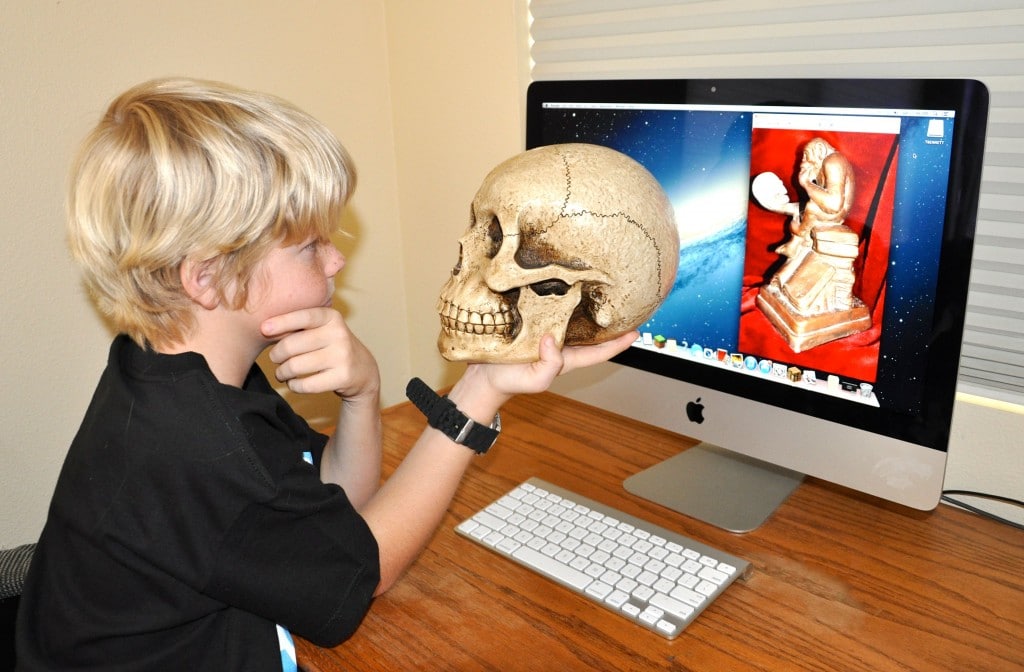
As a tech immigrant, I learned to study with notes and books. But over time. I’ve increasingly integrated screen technology as an essential learning tool. Having grown up in the Digital Age, kids are technology natives who use screen technology as their base. Tech use is amazing! But it can be difficult to manage. That’s why they need parental help more than ever navigating the road to learning.
The role of educational science is to determine the best methods to facilitate successful learning. Encouraging student metacognition is among a teacher’s (and parent’s) most important and challenging tasks. Metacognition refers to student knowledge about their cognitive processes and the ability to organize, monitor, and modify these processes as a function of learning. In other words, metacognition is “thinking about thinking.”
Today’s GKIS article offers tools to help you become the best life learner you can be.
DR. BENNETT’S ROAD MAP FOR LEARNING
1. Learn from the get-go.
Don’t waste a moment. Be an active learner the minute you come into contact with the material. Actively engage with the content while you read the textbook, take notes in class, and watch the videos. Participating in class also helps deep processing of the material!
2. Learn while you format study materials.
Outline the text and rewrite and highlight your notes. Attend to and connect the main concepts. Leave out illustrative details so you have only essential material (fewer pages) to memorize.
3. Set the stage to study.
Block out sufficient study time over several days using a block-scheduling download from the Internet. Prepare yourself and your study space. Make sure you are comfortable and fit (fed, hydrated, rested) with a positive attitude about studying. Find a comfortable, non-distracting study location. Turn off your devices and other notifications and commit to studying only, no social media or Internet surfing.
4. Engage with content, don’t kill and drill.
For a student to learn effectively, they must engage with the content and integrate it into a meaningful framework. Students often make the mistake of mindlessly rehearsing isolated facts, thinking time spent is evidence of learning. Kill and drill is a waste of time and mind-numbingly punishing. Deeply processing information is the best way to learn. That means you must find ways to make the content meaningful to you.
5. Create learning pathways.
Each time we encode a fact into the hippocampal area (memory center) of our brain, we create a learning pathway to that content. That pathway can then be traveled later for retrieval at test time. Increasing the number of pathways to that encoded fact is the process of effective learning.
In items 2 and 3 of this list, you already paved the initial pathways! The first pathways were laid down when you listened to the lecture, wrote notes, read the textbook, answered the teacher’s questions, and formatted study materials.
To pave additional pathways to test content, find creative ways to further engage with and elaborate on the material while you study. The more emotionally and cognitively meaningful the material is for you, the easier it will be to learn. For example, use the Internet to view the study material in a variety of vivid formats, such as illustrative maps, diagrams, pictures, speeches, or videos. Link the information to emotionally meaningful memories or associated topics. Study from a variety of locations. Form a study group and talk with others about the content.
6. Rehearse the information and practice retrieving it and applying it just like you would at test time.
If the test is multiple-choice, make up questions that would lead to memorized facts. If the test is an essay, practice outlining and writing essays on that material. If the test is open-note, open-book, organize and tab your materials so you can get to them quickly and prep for the best internet search terms.
7. Study small chunks of material at a time over several days, eventually linking the chunks together.
Don’t cram at the last minute. Your brain needs time to deeply process newly learned material. It will even process when you’re not actively studying, even in your sleep! That means it’s best to learn and rehearse chunks of material over several days. By test time, the chunks will come together for easy, A+ retrieval.
Voila!! This is the recipe for excellent learning. By my junior year at UCLA, I had mastered these skills. This allowed me to get excellent grades with relatively few hours of non-punishing study. As a university professor, I now witness how the A-students successfully apply these techniques.
View my free video, “How to Study Effectively: Metacognition in Action” below which further illustrates my ROAD MAP FOR LEARNING.
Onward to More Awesome Parenting,
Tracy S. Bennett, Ph.D.
Mom, Clinical Psychologist, CSUCI Adjunct Faculty
GetKidsInternetSafe.com
If you want to see this video in HD on YouTube click here
Don't worry, we will never spam you.










